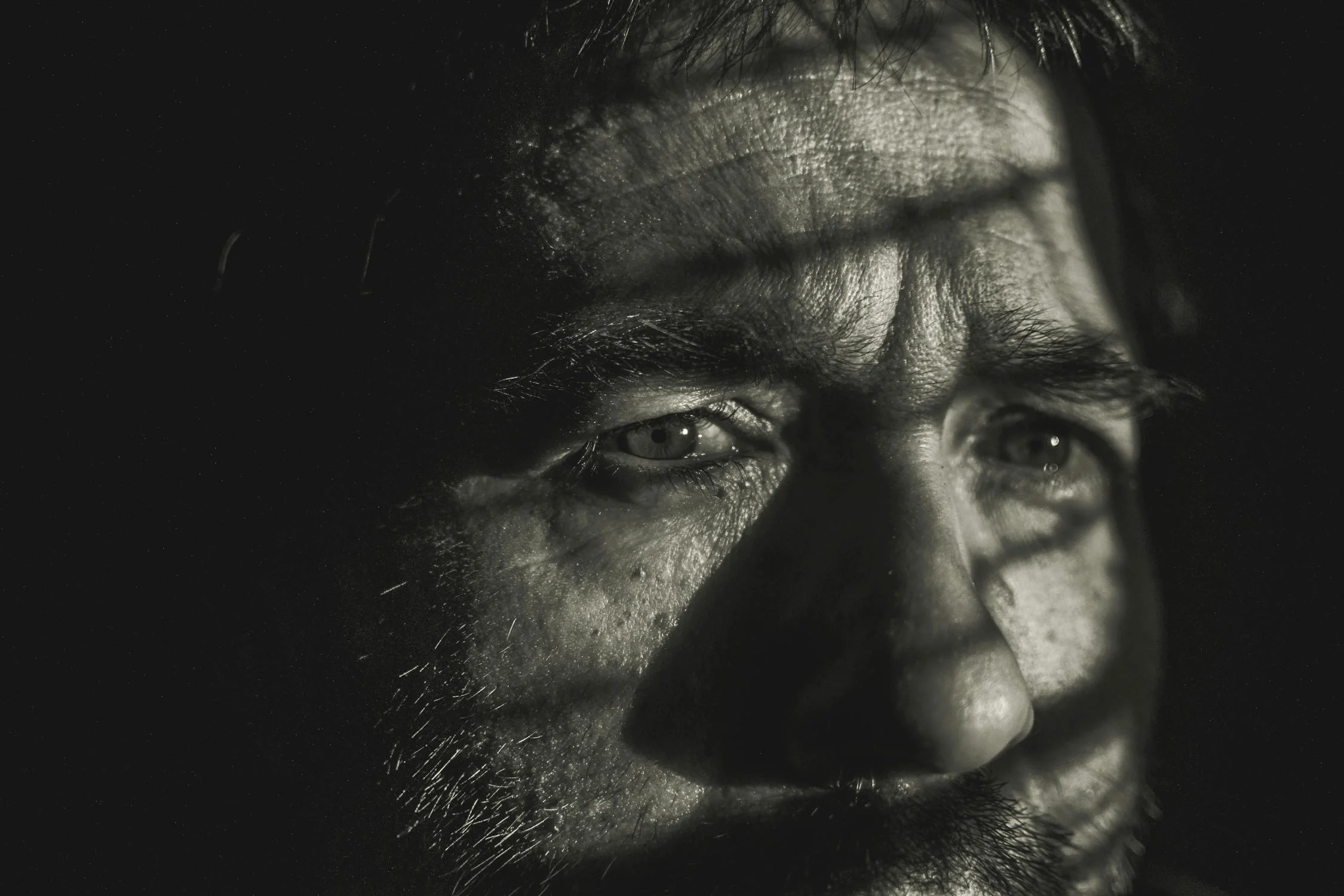
By Dr David Dawson, PhD - AHPRA Registered Psychologist. (Formerly) Lecturer Paramedic Mental health, Victoria University. ACP Paramedic Wellbeing Working Group. IPAWS researcher.
Melbourne/Naarm, Wurundjeri Country
'Paramedics are more likely than other first responders to be exposed to traumatic events.'
Introduction
Paramedics are more likely than other first responders to be exposed to traumatic events; being a paramedic is a risk factor for developing PTSD (1). Some studies have reported higher levels of depression, anxiety and psychological distress in paramedics compared to the general population, and sleep problems are more prevalent (2-5). These conditions can be comorbid with PTSD (6,7). Physical health conditions are also potentially comorbid with PTSD and include changes in brain structures, as well as hypertension and cardiovascular disease (8-10).
It is imperative for people at higher risk of PTSD to have an appreciation of which treatments are best supported by evidence, and which are not. These treatments are outlined in the “Australian Guidelines for the Prevention and Treatment of Acute Stress Disorder, Posttraumatic Stress Disorder and Complex PTSD” (11). Some of these treatments are described below.
The Australian Psychological Society (APS) website describes PTSD as a “set of symptoms that can emerge some time after exposure to a potentially traumatic event involving actual or threatened death, serious injury, or sexual violence” (12). The APS website outlines four groups of symptoms indicative of PTSD (from which the following information is taken unless otherwise indicated). These symptoms are:
• A sense of reliving the event. This includes unwanted thoughts and images related to the distressing event, including nightmares and flashbacks.
• Avoidance and numbing. Indicated by a person avoiding “people, places and activities associated with the traumatic event.” Here, the person actively makes efforts to avoid reminders of the traumatic event (11).
• Negative thoughts or mood. This can include loss of interest in previously enjoyed activities, feelings of detachment from others, and “negative thoughts about self, others, and the world”.
• Feeling wound-up. This comprises a range of signs, such as sleep difficulties, increased irritability and anger, and poor concentration and memory. Being more easily and strongly startled by things happening in your environment (like sudden noise) is also included in this category, as is hypervigilance (being constantly on guard and looking for hidden dangers).
PTSD is diagnosed “when symptoms are present for more than one month and cause significant distress or interfere with important areas of functioning, such as work, study, or family life”12. Physical ill-health issues may also be present. Comorbid conditions are rarely absent if PTSD symptoms have been present for more than a few months11.
Dealing with PTSD - Intervention not recommended
An important matter is what the guidelines explicitly do not recommend. The Australian guidelines on early intervention (within three months) have a conditional recommendation against the use of individual and group psychological debriefing, which includes critical incident stress debriefing (13). A conditional recommendation against an intervention indicates it does not benefit most people. The evidence indicates that psychological debriefing in the first three months after a traumatic event is 1) ineffective, 2) increases the longer-term risk of developing PTSD, and 3) does not decrease the risk of developing anxiety, depression or general psychological morbidity (14,15). In other words, these researchers reported that early psychological debriefing was associated with adverse outcomes.
That talking about traumatic experiences too soon, or in an unsuitable context, can have adverse effects is important because this is what people are sometimes urged to do. An example was the occasion of the Hunter Valley bus crash in June 2023, where people involved (including first responders) were advised via the media to talk about their experience soon after it happened, as reported on 19 June 2023 by the ABC (16). The central messages in this programme were consistent with the Australian guidelines as described above, which were that people should only talk about their traumatic experiences if they want to and when they are ready. Furthermore, these conversations are best conducted with trusted people known to the trauma-exposed person, such as colleagues, family and friends. However, when a person does feel the need to access professional help, then that is what they should do.
Dealing with PTSD - Recommended interventions
The Australian guidelines strongly recommend a stepped/collaborative care model (13). Essentially, this model suggests that individuals are first repeatedly monitored and supported. The aim is to provide individuals with care proportionate with the severity and complexity of their needs. Within the first two weeks after exposure to trauma, a person should be provided with the following care: “Provide psychological first aid, including:
• Monitor wellbeing and stabilise if needed
• Provide self-care advice
• Encourage social support
• Encourage limiting substance use (17).”
The aim of this phase is to assist a recovery to normal health and functioning.
During the three months following exposure, a person should be regularly screened to evaluate the presence of PTSD symptoms (in line with the stepped care model). When a person experiences PTSD symptoms in the three months after trauma exposure, early access (or referral) for psychological treatment should be considered (13). A person should also access psychological treatment for PTSD symptoms occurring after the three-month period.
A key concern is to identify what forms of psychological treatments are recommended by the Australian guidelines. Generally, these interventions are based on cognitive-behaviour therapy (CBT) approaches, but sometimes other psychological tactics are used, such as motivational interviewing. “Cognitive behavioural therapy is a talking therapy that can help you manage your problems by changing the way you feel, think and act” (11). The strongly recommended psychological approaches which a person seeking help with PTSD symptoms can expect to encounter are:
• Cognitive processing therapy (CPT). This is a form of cognitive therapy developed specifically for the treatment of PTSD. This treatment is typically delivered over 12 sessions.
• Trauma-focused cognitive therapy (TF-CT, sometimes labelled as “CT”). Briefly, this therapy endeavours to change excessively negative appraisals and to adjust problematic behavioural and cognitive strategies. This treatment is typically delivered over 12 sessions.
• Eye movement desensitisation and reprocessing (EMDR). “In EMDR the person is asked to focus on the trauma-related imagery, and the associated thoughts, emotions, and body sensations” while moving their eyes back and forth. There is a strong evidence base for this therapy, although it can appear to be an odd process when it is first encountered.
• Prolonged exposure (PE). This is where the person is exposed to the traumatic event in a controlled way with the aim of reducing the anxiety (and other feelings) associated with the event. Exposure therapy includes repeatedly recalling the event and visiting the place where the event was experienced.
• Trauma-focused cognitive behavioural therapy (TF-CBT). This approach uses proven CBT techniques to address the traumatic experience and the various aspects or consequences of PTSD (13).
The recommendations above are well supported by evidence. Some additional treatments are mentioned in the guidelines as conditional recommendations, signifying that they may be useful for many people but the evidence is not sufficient enough to strongly recommend them for general use. These treatments are:
• Guided internet-based trauma-focused CBT
• Guided trauma-focused CBT via telehealth (video conferencing)
• Narrative exposure therapy (NET)
• Present-centred therapy (PCT)
• Stress inoculation training (SIT)
• Trauma-focused CBT (group) (13).
The guidelines also indicate the use of pharmacological interventions in the form of serotonin reuptake inhibitors (SSRIs) and serotonin and noradrenaline reuptake inhibitors (SNRIs) (13). The guidelines state the use of these pharmaceutical interventions is a conditional recommendation because there is lower certainty in the evidence for their use. However, many people may find them to be beneficial.
Conclusion
Addressing PTSD in paramedics immediately after exposure, and in the first three months, requires a nuanced approach as indicated by the stepped/collaborative care model. A key and clear message is that compelling people to talk too soon about their traumatic experiences in a formal situation, as in the context of individual or group psychological debriefing, is not recommended: There is a grave risk of adverse outcomes. It would be reasonable for paramedics (and others) who are dealing with the aftermath of exposure to a traumatic to expect interventions supported by good evidence, like those mentioned above. You use evidence-based treatments for your patients; best to do the same for yourself.
References
1 Berger, W. et al. Rescuers at risk: a systematic review and meta-regression analysis of the worldwide current prevalence and correlates of PTSD in rescue workers. Soc Psychiatry and Psychiatric Epidemiology 47, 1001-1011, doi.org/10.1007/s00127-011-0408-2, (2012).
2 Courtney, J. A., Francis, A. J. & Paxton, S. J. Caring for the carers: fatigue, sleep, and mental health in Australian paramedic shiftworkers. The Australasian Journal of Organisational Psychology 3, 32-41 (2010).
3 Courtney, J. A., Francis, A. J. & Paxton, S. J. Caring for the country: fatigue, sleep and mental health in Australian rural paramedic shiftworkers. Journal of community health 38, 178-186 (2013).
4 Petrie, K. et al. Prevalence of PTSD and common mental disorders amongst ambulance personnel: a systematic review and meta-analysis. Social Psychiatry & Psychiatric Epidemiology 53, 897-909, doi:10.1007/s00127-018-1539-5 (2018).
5 Pirrallo, R. G., Loomis, C. C., Levine, R. & Woodson, B. T. The prevalence of sleep problems in emergency medical technicians. Sleep & breathing = Schlaf & Atmung 16, 149-162, doi:10.1007/s11325-010-0467-8 (2012).
6 Australian Centre for Posttraumatic Mental Health. Australian guidelines for the treatment of acute stress disorder and posttraumatic stress disorder. (ACPMH, 2013).
7 McLeay, S. C. et al. Physical comorbidities of post-traumatic stress disorder in Australian Vietnam War veterans. The Medical Journal Of Australia 206, 251-257 (2017).
8 Kibler, J. L., Joshi, K. & Ma, M. Hypertension in Relation to Posttraumatic Stress Disorder and Depression in the US National Comorbidity Survey. Behavioral Medicine 34, 125-132, doi:10.3200/BMED.34.4.125-132 (2009).
9 Kubzansky, L. D., Koenen, K. C., Spiro, A., 3rd, Vokonas, P. S. & Sparrow, D. Prospective study of posttraumatic stress disorder symptoms and coronary heart disease in the Normative Aging Study. Arch Gen Psychiatry 64, 109-116 (2007).
10 Sherin, J. E. & Nemeroff, C. B. Post-traumatic stress disorder: the neurobiological impact of psychological trauma. Dialogues in Clinical Neuroscience 13, 263-278 (2011).
11 Phoenix Australia. Australian Guidelines for the Prevention and Treatment of Acute Stress Disorder, Posttraumatic Stress Disorder and Complex PTSD, (2021).
12 Australian Psychological Society. Post-traumatic stress disorder, (2024).
13 Phoenix Australia. Australian Guidelines for the Prevention and Treatment of Acute Stress Disorder, Posttraumatic Stress Disorder and Complex PTSD (Chap 4) (2021).
14 Bisson, J. I. et al. Preventing the onset of post traumatic stress disorder. Clinical Psychology Review 86, 102004, doi.org/10.1016/j.cpr.2021.102004 (2021).
15 Rose, S. C., Bisson, J., Churchill, R. & Wessely, S. Psychological debriefing for preventing post traumatic stress disorder (PTSD). Cochrane Database of Systematic Reviews.
16 Scott, E. in The Health Report (ed Norman Swan) (Australian Broadcasting Corporation, Sydney, 2023).
17 Phoenix Australia. Evidence-based treatment for an adult after a traumatic event: A Guide for GPs, (2022).
18 Australian Psychological Society. (2024). Post-traumatic stress disorder. Australian Psychological Society. Retrieved 3rd March 2924 from https://psychology.org.au/for-the-public/psychology-topics/posttraumatic-stress-disorder

Get unlimited access to hundreds of ACP's top courses for your professional development.
Join Now